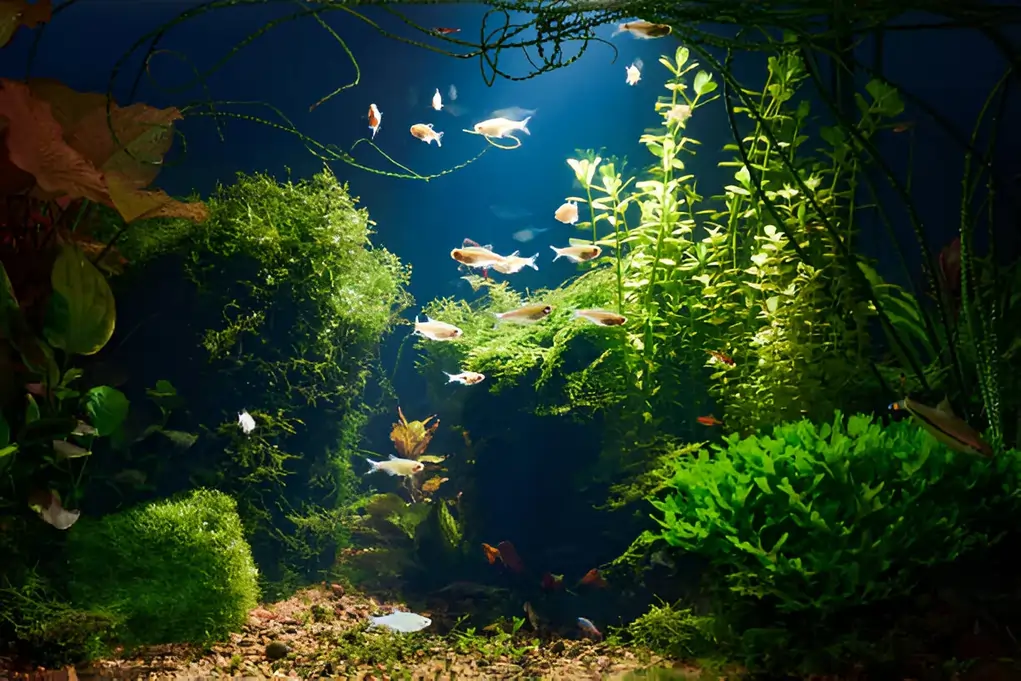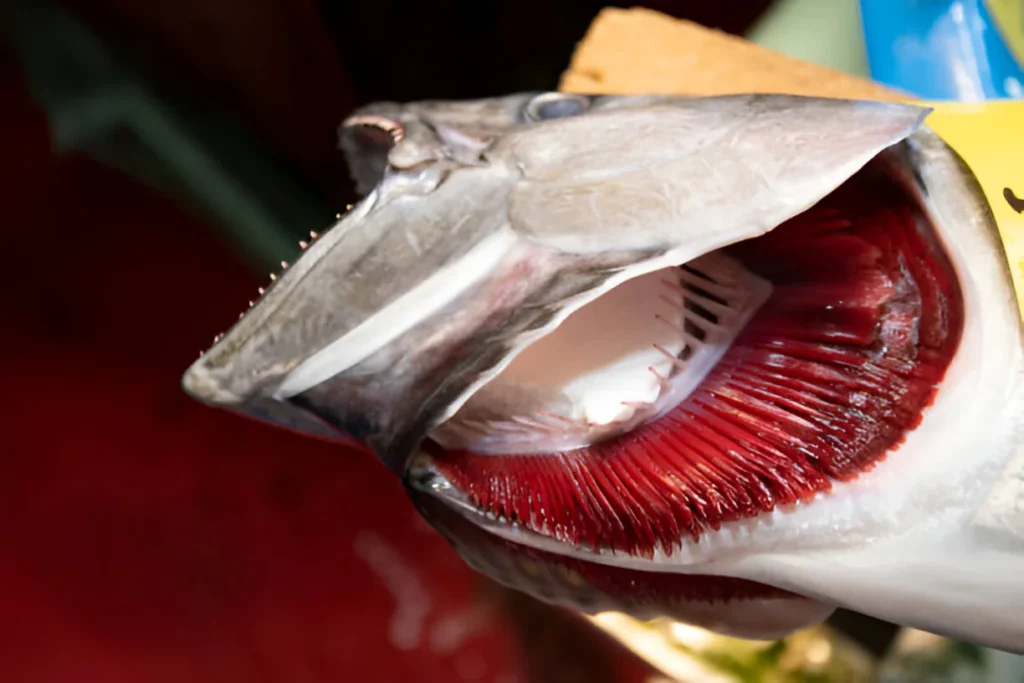Imagine a fish tank that’s no longer just a domestic in your aquatic pets but a colorful, dwelling work of art. Live aquarium plants can turn any ordinary tank into a breathtaking underwater paradise.
They deliver lush greenery, dynamic colorations, and a herbal habitat that supports each the aesthetic and ecological stability of your aquatic environment. Whether you’re a seasoned aquarist or just starting out, incorporating live plants is a sport-changer.
Dive into our listing of the ten high-quality live aquarium vegetation in order to rework your fish tank into a stunning aquatic haven. From hardy favorites to wonderful beauties, these flowers are certain to enhance your tank’s appeal and offer a thriving environment for your fish.
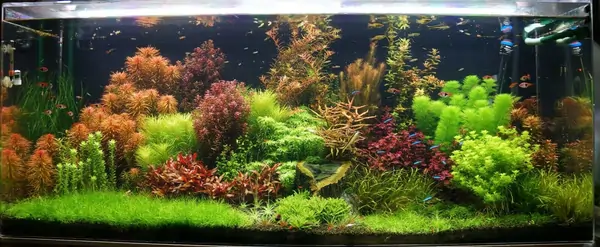
Factors to be considered when choosing aquarium plants
Choosing the right aquarium flora is vital for creating a healthy and visually attractive fish tank. Here are a few key elements to recollect:
1. Lighting Conditions
- Low Light: Choose hardy flora like Java Fern or Anubias that thrive in low-light environments.
- Medium to High Light: Opt for vegetation like Rotala or Ludwigia that require brighter light for most reliable increase.
2. Growth Rate
- Fast-Growing Plants:Ideal for combating algae and speedy filling up space, inclusive of Hornwort or Cabomba.
- Slow-Growing Plants: These require much less maintenance and are appropriate for solid, lengthy-time period setups, like Anubias.
3. Care and Maintenance
- Ease of Care: Some plants are amateur-friendly and require minimal renovation, like Java Fern and Anubias.
- Advanced Care: Others may additionally need more interest, which includes specific nutrient stages and everyday trimming, like Rotala or Ludwigia.
4. Tank size and location
- Small tank: Consider small or slow-growing plants, such as java moss or cryptocoryne.
- Large Bucket: You can include large plants such as Amazon Sword or Vallisneria to cover the background.
5. Water parameters
- PH Level: Make sure the plants you choose can grow within the tank’s pH range. Most aquarium plants prefer a pH between 6.0 and 7.5.
- Temperature: Choose plants that can tolerate the temperature range of your aquarium. This is generally 72°F to 78°F (22°C to 26°C).
6. Compatible with fish and invertebrates
Make sure the plants you choose are compatible with your fish and invertebrates. Some fish gnaw or uproot plants.
Surface type
- Nutrient-rich Substrate: Useful for root-producing plants such as Amazonian Swordfish or Cryptocoryne.
- Sand or gravel: Suitable for plants that can cling to rocks or trellises, such as Anubias or Java fern.
Drowning goal
- Foreground plants: Smaller, immature plants such as Java Moss or Dwarf Hairgrass.
- Midland Plants: Plants like Cryptocoryne or Anubias that give a balanced look.
- Background plants: Tall, bushy plants such as Vallisneria or Amazon Sword. in order to have depth and coverage
Considering these factors You can choose the best aquarium plants. and create a rich, beautiful, and harmonious aquatic environment.
Top 10 Aquarium plants for your fish tank
Here is the list of top 10 aquarium plants which are perfect for your fish tanks.
1. Anubias Bonsai
Anubias Bonsai is a compact and visually striking aquarium plant acknowledged for its miniature tree-like appearance. It capabilities small, dark green leaves with a leathery texture, developing on a strong, thick rhizome.
Anubias Bonsai prospers in low to slight lights and can adapt to a number of water conditions, making it clean to take care of. It’s perfect for small aquariums or as a foreground plant in large setups, and it can be anchored to rocks or driftwood rather than planted in substrate. Its slow boom rate and low renovation make it a favorite amongst aquarists.
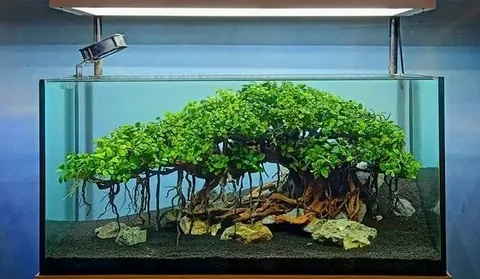
2. Java Fern (Microsorum pteropus)
Java Fern is a sturdy and flexible aquarium plant valued for its appealing, dark green leaves and simplicity of care. It capabilities elongated, serrated leaves that upload a lush, herbal look to any tank.
Java Fern thrives in low to slight lighting situations and does no longer need to be planted in the substrate; it could be connected to rocks or driftwood. Its slow increase rate and low renovation requirements make it a notable desire for novices and an incredible addition to any aquascaping setup.
3. Amazon Sword (Echinodorus amazonicus)
Amazon Sword is a placing aquarium plant recognized for its massive, wide leaves and sturdy increase. It commonly forms a dense, bushy backdrop in tanks due to its tall and huge foliage. Amazon Sword prospers in moderate to excessive lighting fixtures and blessings from a nutrient-wealthy substrate to help its huge root device.
It can adapt to plenty of water conditions but prefers a temperature range of seventy two°F to eighty two°F (22°C to twenty-eight°C). Its dramatic, lush look makes it a popular choice for growing natural and visually appealing surroundings in large aquariums.
4. Vallisneria
Vallisneria is a popular aquarium plant known for its long, ribbon-like leaves that give it a natural grass-like appearance. It is tall, able to form a strong and shiny backing in the tank, providing excellent cover and concealment for fish.
Vallisneria grows in low to high light conditions and is adapted to a variety of water types. It prefers temperatures from 68°F to 82°F (20°C to 28°C) and a substrate that supports its root system. Its fast growth and low maintenance requirements make it popular with water sculptors to enhance the look of the tanks.
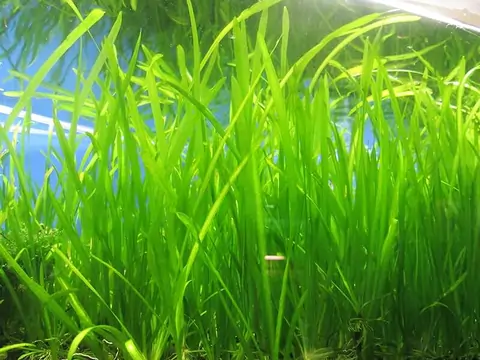
5. Cryptocoryne
Cryptocoryne is a popular versatile aquatic plant known for its variety of birds and leaves, which can be narrow and elongated and broadly wavy and often with fine, foliage dark green to reddish brown adding depth and texture to aquascapes.
It grows in low to moderate light and is adaptable to a variety of water conditions, although it is best suited to mid-range aquatic environments that prefer temperatures from 72°F to 78°F (22°). C to 26°C), and benefits from a nutrient-rich substrate to support its root system. The ease of maintenance and unique foliage make it ideal for beginners and experienced plumbers alike.
6.Water Wisteria (Hygrophila difformis)
Water Wisteria is a famous aquarium plant valued for its fast increase and colorful appearance. It features sensitive, feathery leaves that create a lush, furry look, including dynamic texture on your tank.
Water Wisteria flourishes in mild to excessive lights and is adaptable to a number of water situations, such as various pH tiers and temperatures between 72°F and eighty two°F (22°C to twenty-eight°C). Making it a versatile choice for aquascaping , it can be planted within the substrate or left to drift. Its rapid boom facilitates fighting algae and affords splendid insurance and hiding spots for fish.
7.Hornwort (Ceratophyllum demersum)
Hornwort is a fast growing highly adaptable aquarium plant known for its feathery needle-like leaves. They can be used as floating plants or mounted on the substrate. Hornwort thrives in light conditions and water parameters, making it suitable for tank systems.
It prefers a temperature range of 59°F to 72°F (15°C to 22°C) and can grow rapidly, helping to absorb excess nutrients and reduce algae growth Its dense, woody habits are attractive to fish find a good place to cover and hide, too It adds a natural, warm feel to the aquarium.
8. Ludwigia
Ludwigia is a famous aquarium plant recognised for its hanging hues and varied species. It generally capabilities bright inexperienced to reddish leaves that may add a vivid, appealing detail to any tank. Ludwigia thrives in mild to excessive lights and blessings from a nutrient-rich substrate.
It prefers a temperature variety of 72°F to seventy eight°F (22°C to 26°C) and can adapt to a variety of water situations, which include varying pH tiers. Its furry boom addiction and colorful colors make it a tremendous choice for the midground or background of an aquarium, offering both aesthetic enchantment and purposeful benefits with the aid of enhancing water exceptionally.
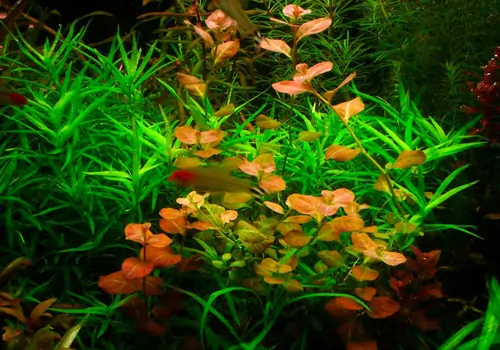
9. Bacopa
Bacopa is a popular aquarium plant known for its attractive, compact increase and ease of care. It functions as small, oval leaves that can range from inexperienced to reddish colorings, depending on the lights and water conditions. Bacopa flourishes in moderate to high lighting fixtures and can adapt to loads of water parameters, along with temperatures between 72°F and 78°F (22°C to 26°C).
Bacopa grows properly in a nutrient-wealthy substrate and may be trimmed to maintain its form. Its versatility and dense foliage make Bacopa a superb desire for adding texture and color to the midground or background of your aquarium while additionally imparting hiding spots for fish.
10. Pothos (Epipremnum aureum)
Pothos is a versatile and famous aquarium plant, mainly preferred for its hardy nature and coffee upkeep necessities. Known for its trailing vines and heart-formed leaves, Pothos can upload a lush, cascading impact for your tank.
It prospers in a number of lighting situations, from low to shiny, and may grow both inside and out of water, making it adaptable for one of a kind aquascaping styles. While it prefers temperatures between 65°F and 75°F (18°C to 24°C), Pothos is distinctly tolerant of fluctuating conditions. Pothos regularly used to help absorb excess nutrients and enhance water first-rate, making it a practical and decorative desire for aquarium setups.
Conclusion
Incorporating live aquarium vegetation into your fish tank now not simplest enhances its visual attraction however additionally creates a healthier environment on your aquatic pets. Each of the top 10 flora listed—starting from the hardy Anubias Bonsai and Java Fern to the vibrant Ludwigia and adaptable Pothos—brings precise attributes which could transform your tank right into a thriving underwater paradise. Whether you are seeking for lush greenery, dynamic textures, or a boost in ecological balance, choosing the right plants based totally on lighting situations, increase prices, and care desires will ensure a stunning and sustainable aquatic landscape. Embrace those flora to obtain each aesthetic beauty and a flourishing habitat for your fish.
